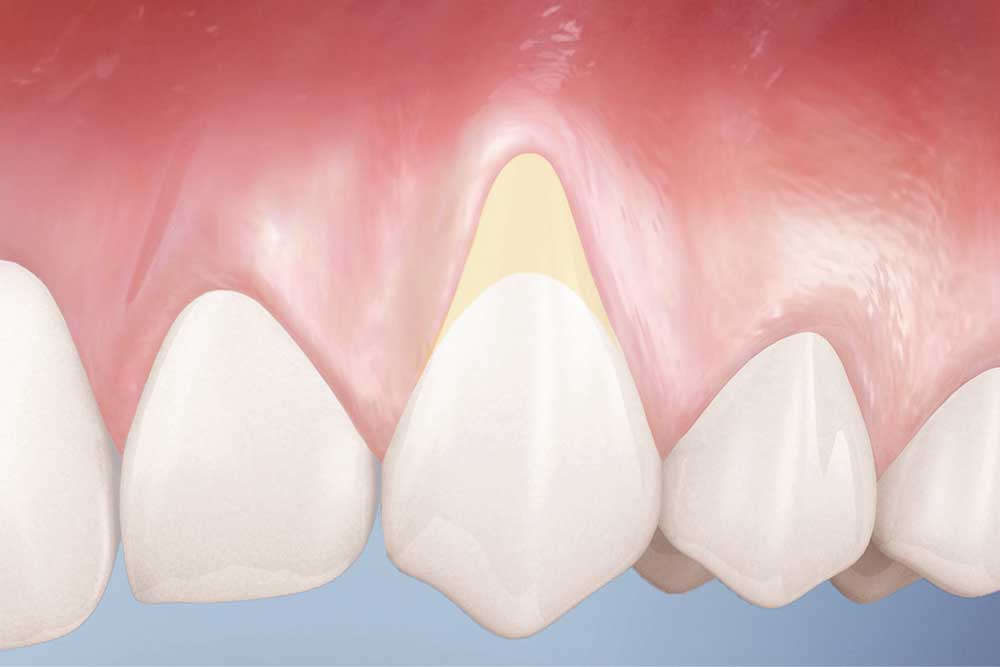Exposed Roots Teeth Guide: Coverage Options

Exposed roots on teeth can be a source of discomfort, sensitivity, and aesthetic concern for many individuals. This condition, often resulting from gum recession, can make teeth appear longer and compromise the overall health and appearance of one’s smile. Understanding the causes, symptoms, and available treatments for exposed roots is crucial for managing the condition effectively. In this comprehensive guide, we will delve into the world of exposed roots, exploring the reasons behind their exposure, the impact on oral health, and most importantly, the coverage options available to address this issue.
Understanding Exposed Roots
Before diving into the solutions, it’s essential to understand why tooth roots become exposed. The primary cause is gum recession, which can result from a variety of factors including aggressive brushing, poor oral hygiene, gum disease (periodontitis), and genetic predisposition. When the gums recede, they pull back from the teeth, exposing the roots. This exposure can lead to sensitivity, especially to hot and cold temperatures, and can increase the risk of decay on the exposed root surface.
Coverage Options for Exposed Roots
Fortunately, there are several dental treatments and procedures designed to cover exposed roots, restore comfort, and improve the appearance of the teeth. These options vary based on the severity of the exposure, the overall health of the tooth and surrounding gum, and the patient’s personal preferences and financial considerations.
1. Gum Grafting
Gum grafting is a surgical procedure aimed at covering the exposed roots by taking gum tissue from another part of the mouth and attaching it to the affected area. This not only covers the exposed root but also helps to prevent further recession. There are different types of gum grafts, including connective-tissue grafts, free gingival grafts, and pedicle grafts, each suited to different situations and patient needs.
2. Dental Bonding
For less severe exposures, dental bonding can be an effective and less invasive option. This procedure involves applying a tooth-colored resin to the exposed root, which is then hardened with a special light. Bonding can improve the appearance of the tooth and reduce sensitivity but may not be as durable as other options and might need to be repeated over time.
3. Veneers
Veneers are thin layers of porcelain or composite material placed over the front of the teeth. While primarily used for cosmetic purposes, veneers can also be used to cover exposed roots, especially if the exposure is minimal and primarily aesthetic in nature. Veneers can significantly improve the appearance of the teeth, making them look healthier and more uniform.
4. Crowns
In cases where the exposed root is also decayed or damaged, a dental crown might be the best option. A crown is a cap that covers the entire tooth, including the exposed root, providing full coverage and protection. Crowns can be made from various materials, including porcelain, ceramic, and gold, each offering different advantages in terms of durability, appearance, and cost.
5. Desensitizing Toothpaste and Varishes
For minor exposures with sensitivity, using desensitizing toothpaste or having a dentist apply a desensitizing varnish can provide relief without the need for more invasive procedures. These products work by blocking the dentinal tubules in the root, reducing the conduction of sensations.
Choosing the Right Option
The choice of treatment depends on several factors, including the extent of the root exposure, the patient’s oral health, budget, and personal preferences. It’s crucial to consult with a dentist or a periodontist to assess the condition and discuss the most suitable treatment options. A professional evaluation will help determine the best course of action to address not only the symptoms but also the underlying cause of the exposed roots.
Preventing Future Exposure
While treatments can address current exposed roots, prevention is key to avoiding future occurrences. Practicing good oral hygiene, including gentle brushing and regular flossing, attending scheduled dental check-ups, and avoiding habits like aggressive brushing or tobacco use can significantly reduce the risk of gum recession and exposed roots.
Conclusion
Exposed roots on teeth are a common issue that can be addressed through various dental treatments. From surgical grafts to cosmetic veneers, the options available cater to different needs and preferences. By understanding the causes and symptoms of exposed roots and exploring the coverage options with a dental professional, individuals can restore the health, comfort, and appearance of their smile. Whether the goal is to alleviate sensitivity, improve aesthetics, or prevent further oral health issues, there is a solution available for those dealing with exposed roots.
What are the primary causes of exposed roots on teeth?
+The primary causes include gum recession due to aggressive brushing, poor oral hygiene, gum disease (periodontitis), and genetic predisposition.
Can exposed roots be prevented?
+What are the available treatments for exposed roots?
+Treatments include gum grafting, dental bonding, veneers, crowns, and the use of desensitizing toothpaste or varnishes, depending on the severity and cause of the exposure.
In the journey to address exposed roots, understanding the condition, exploring the available treatments, and prioritizing preventive care are key steps towards achieving a healthier, more comfortable, and appealing smile. Whether you’re seeking to alleviate sensitivity, enhance aesthetics, or simply ensure the long-term health of your teeth, the right approach, guided by professional advice, can make all the difference.
